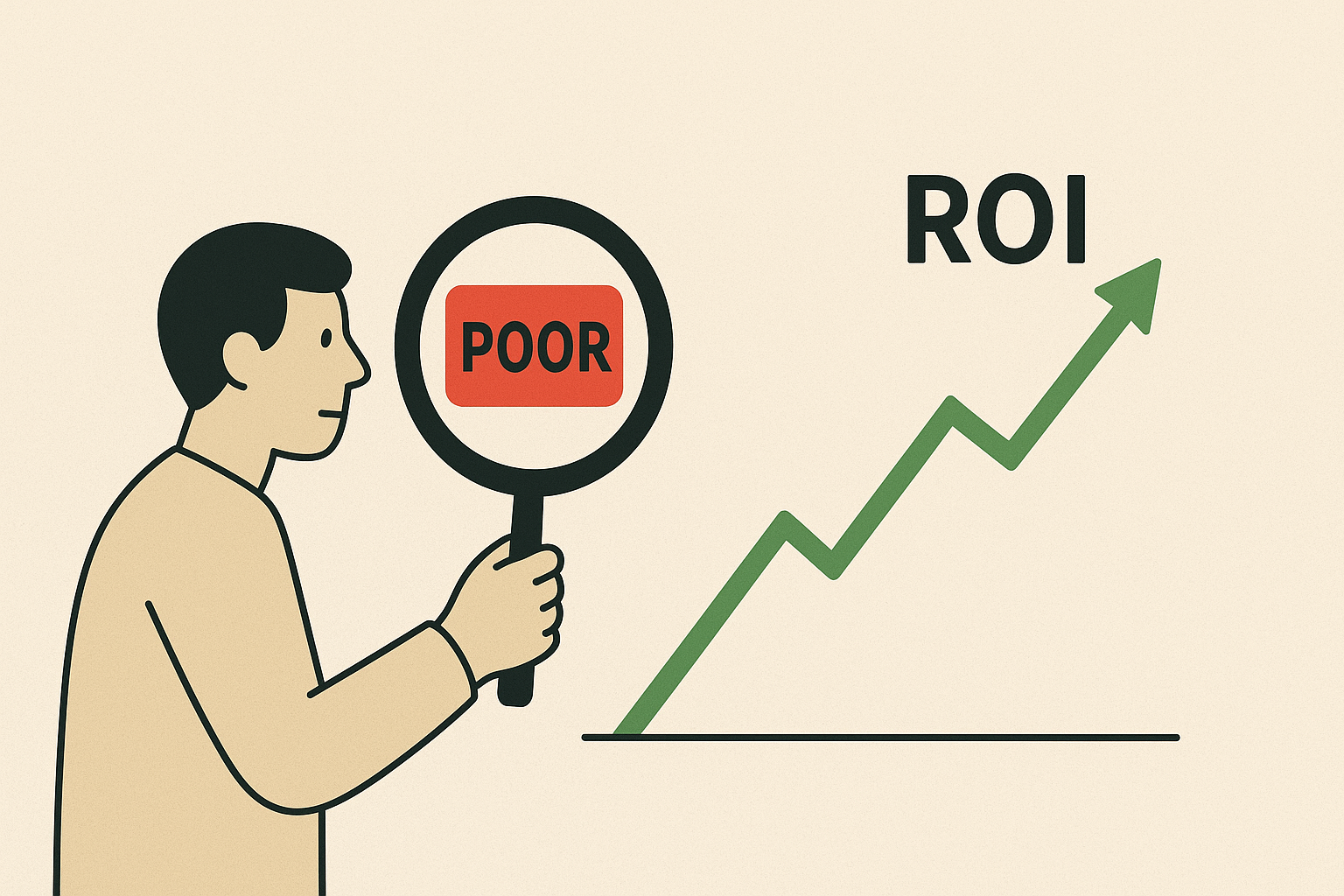If you’ve ever logged into Google or Meta Ads and seen a bright red warning that your campaign performance is Poor or Below Average, you might have felt a twinge of panic. But take a deep breath: these ratings are not a reflection of your actual results or our agency’s performance. They’re automated, algorithm-driven suggestions that often benefit the platform more than the advertiser.
What These Scores Actually Measure
Both Google and Meta use internal scoring systems to rank how “optimized” your campaigns are. You might see these labeled as:
Quality Score (Google)
Optimization Score (Google)
Account Quality / Opportunity Score (Meta)
These scores take into account factors like:
Ad relevance
Expected click-through rate (CTR)
Landing page experience
Account history
How many of the platform’s “recommended” features you’re using
But here’s the catch: the formulas behind these scores are proprietary and opaque. Even experienced media buyers don’t know exactly how they’re calculated or weighted. What we do know is that the scores are designed to nudge advertisers toward using more of the platform’s automated features – and often, toward spending more money.
Why You Shouldn’t Panic When You See “Poor”
A low score doesn’t mean your ads aren’t working. It means the platform believes it could make your ads “better” – usually by adding more automation or expanding your targeting. In many cases, these recommendations would actually undermine your campaign strategy or waste budget.
“Google will often say things like ‘poor performance’ to try to get you to opt into features that give it more control over the ads (and therefore, you and us less control). For example, it wants us to add a bunch of keywords that we know are irrelevant to our current goals. So it is trying to get us to spend more money to opt into those features. Please don’t put a lot of stock in those ratings – we are actively adjusting the ads to make sure they’re working as intended.”
— Kalina Perkins, Media Buyer at Best Practice Media
In other words: a low score doesn’t mean failure. It means the platform disagrees with your strategy – often because it can’t monetize your efficiency.
Why Platforms Use These Scores
Let’s be blunt: these scores are part performance metric, part sales pitch. They serve to:
Encourage adoption of automated bidding or targeting features
Increase advertiser budgets under the guise of “improving” campaigns
Create a sense of urgency and dependency on the platform’s tools
Independent advertisers and PPC experts have noted that these “optimization” nudges often benefit the platform far more than the advertiser.
“They put up a ‘New recommendation’ that we PAY THEM MORE to raise our score back up… like a scare tactic.”
— Advertiser on Reddit
What Actually Matters
At Best Practice Media, we focus on business performance, not arbitrary platform metrics. Here are the metrics that matter:
Conversions / Leads — Real-world actions and sales. We optimize to increase conversion volume and quality.
Cost Per Acquisition (CPA) — Measures efficiency. We work to lower CPA while maintaining lead quality.
Return on Ad Spend (ROAS) — Ties spend to revenue. We track every dollar spent vs. earned.
Conversion Rate (Post-Click) — Reflects funnel and landing page performance. We test creative, copy, and UX to improve this.
Trend Data — Reveals long-term performance. We monitor weekly and monthly improvements, not one-day fluctuations.
These metrics are tied directly to your growth – not to Google’s or Meta’s.
How We Handle ‘Poor’ Scores Behind the Scenes
When a campaign shows a low score, here’s what we actually do:
Investigate, not react. We treat scores as signals to review – not commands.
Analyze underlying factors. We look at CTR, relevance, and landing page experience to identify true areas of improvement.
Test intentionally. We may test platform suggestions – but only if they align with your goals and data.
Communicate transparently. If you see a low score, we’ll explain what it means and what we’re doing about it.
Stay focused on results. We prioritize performance metrics that drive your business – not vanity grades from an algorithm.
The Bottom Line
When you see a “Poor” score, it’s not a crisis – it’s just the platform asking for more control. Our job is to make sure you stay in control of your ad dollars and that every click drives real results.
A low platform score doesn’t mean poor performance. It means you’re optimizing for your business, not their bottom line.
Next Steps for Clients:
If you see a low rating and are concerned, reach out to your BPM media buyer. We’ll walk you through what it means in context and show you the metrics that actually matter.

